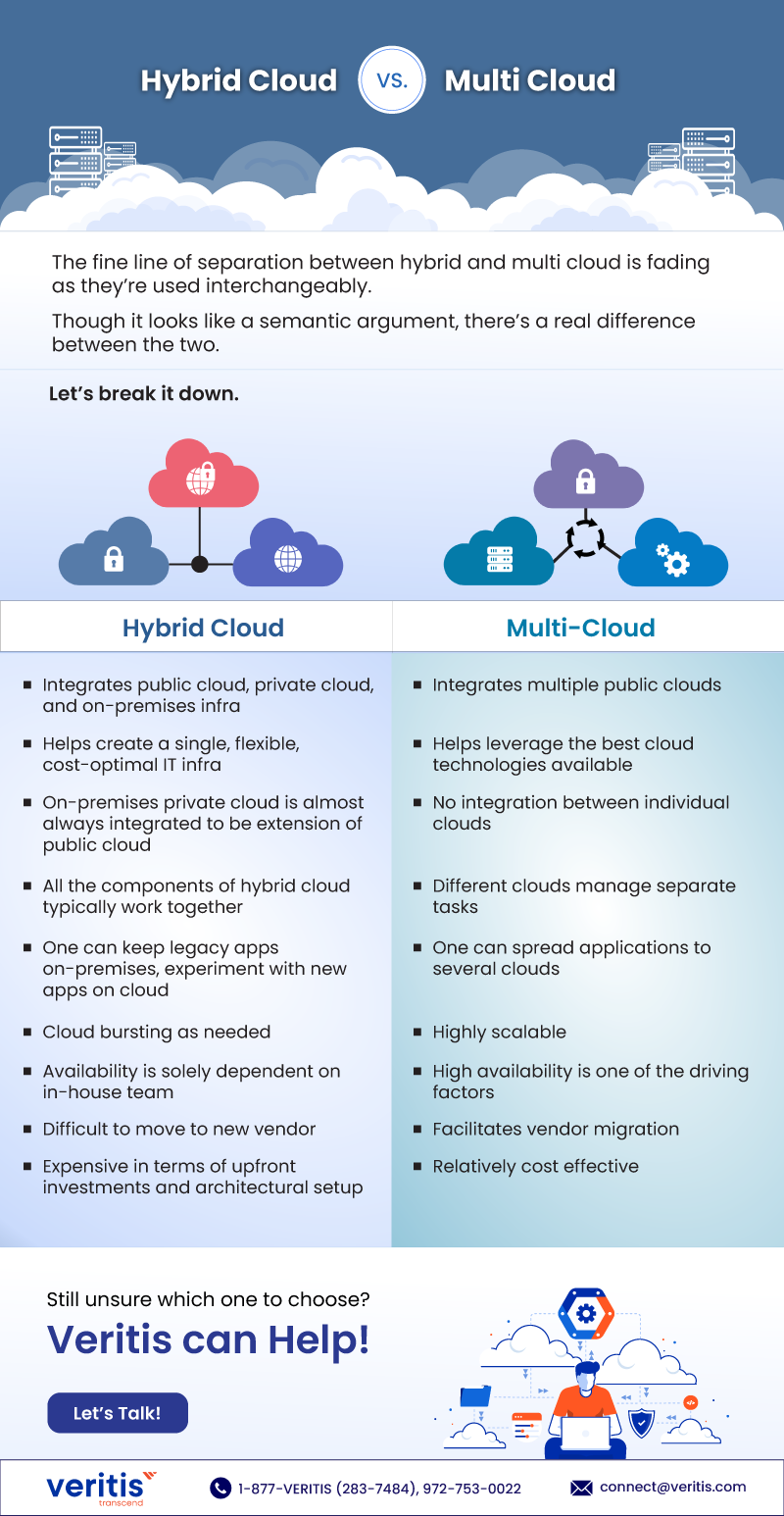As the panoply of cloud vendors and products has proliferated, so have the ways organizations leverage cloud. Today’s cloud ecosystem includes multifarious cloud platforms and deployment models.
Leaving no stone unturned, cloud vendors are scaling new heights with the inclusion of heterogeneous cloud computing services to enable clients to be versatile with their infrastructure.
The multi-cloud and hybrid cloud are such computing services that have enticed the world with great benefits.
While many organizations are automatically moving to either hybrid or multi cloud, one must be cognizant of both the solutions to make the right move.
So, what makes hybrid cloud different from multi-cloud?
Here’s an infographic that depicts the real difference between the hybrid and multi cloud:
Email-us: connect@veritis.com; Call: 972-753-0022
Hybrid Cloud Vs Multi Cloud: What’s the Difference!
The fine line of separation between hybrid and multi cloud is fading as they’re used interchangeably.
Though it looks like a semantic argument, there’s a real difference between the two.
Let’s break it down.
|
Hybrid Cloud |
Multi-Cloud |
| Integrates public cloud, private cloud, and on-premises infra | Integrates multiple public clouds |
| Helps create a single, flexible, cost-optimal IT infra | Helps leverage the best cloud technologies available |
| On-premises private cloud is almost always integrated to be extension of public cloud | No integration between individual clouds |
| All the components of hybrid cloud typically work together | Different clouds manage separate tasks |
| One can keep legacy apps on-premises, experiment with new apps on cloud | One can spread applications to several clouds |
| Cloud bursting as needed | Highly scalable |
| Availability is solely dependent on in-house team | High availability is one of the driving factors |
| Difficult to move to new vendor | Facilitates vendor migration |
| Expensive in terms of upfront investments and architectural setup | Relatively cost effective |
Still unsure which one to choose? Veritis can Help!
Let’s Talk!
More Infographics:


